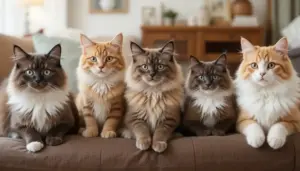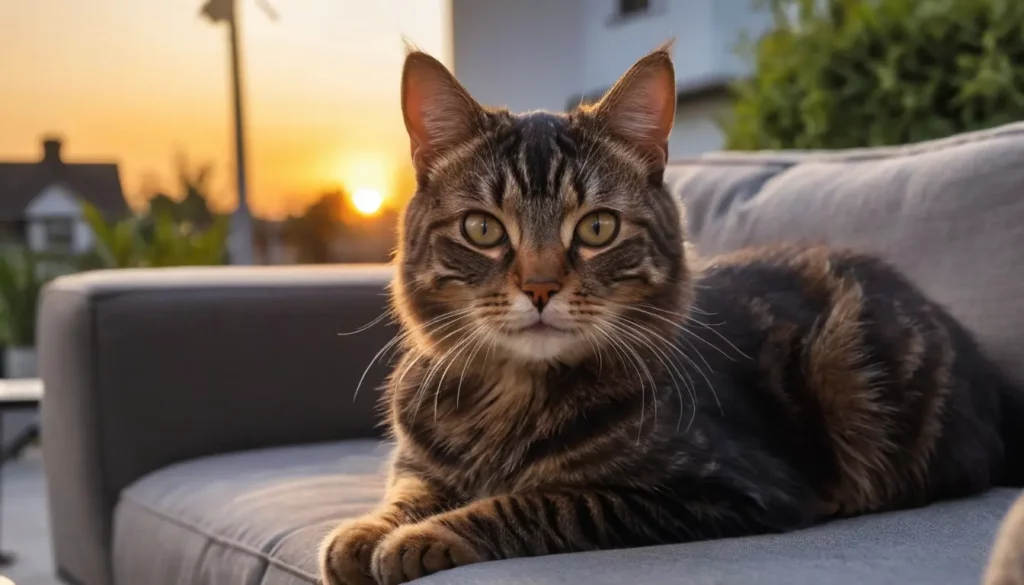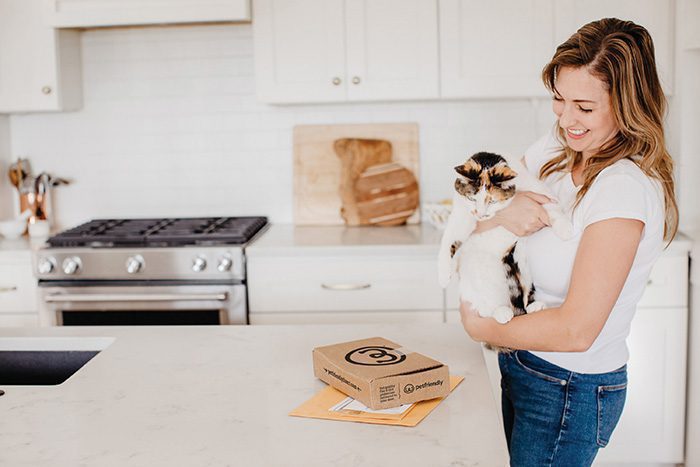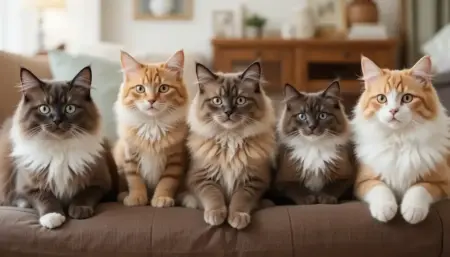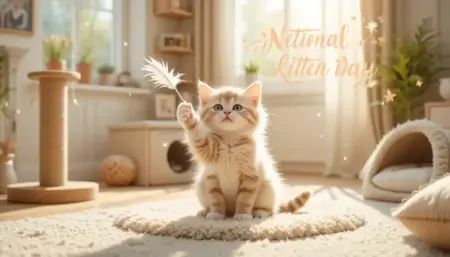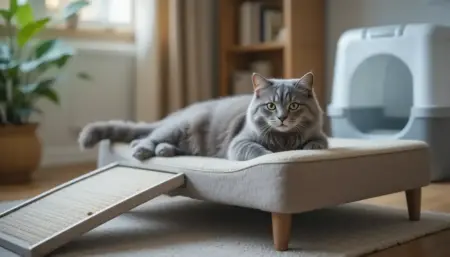With their mesmerizing mosaics of stripes, swirls, and speckles, tabby cats captivate hearts worldwide. More than just pets, these felines are living art pieces, their coats a tapestry of wild elegance.
Yet, their story runs deeper than their striking appearance. Beyond the kaleidoscope of markings lies a genetic legacy intertwined with ancient feline history—and secrets that might surprise even seasoned cat lovers.
Tabby cats are defined not by breed but by their signature coat patterns:
- Mackerel: Sleek, tiger-like stripes.
- Classic: Bold, swirling bullseye designs.
- Spotted: Polka-dotted fur with rosette-like clusters.
- Ticked: A shimmering, salt-and-pepper effect.
Though their coats draw immediate admiration, tabbies are also cherished for their playful personalities and adaptability, making them one of the most beloved companions in households globally.
But what lies beneath their captivating exterior? From the genetic quirks that paint their fur to whispers of their ancestors’ wild past, these cats harbor mysteries waiting to be uncovered.
Join us as we unravel the tale of tabby cats—a journey where science, history, and charm collide to reveal why these felines have pawed their way into human affection for millennia.
The Origins and History of Tabby Cats
Long before they curled up on our sofas, tabby cats roamed wild landscapes, their striped coats blending into reeds and shadows.
Their story begins not in human homes but in the rugged terrains of the Near East, where their ancestors first forged a genetic blueprint that would echo through millennia.
A Legacy Woven in Genetics
The tabby pattern traces back to the African wildcat (Felis lybica), a solitary hunter whose striped fur mimicked sunlight filtering through grass—a survival tactic honed over 10,000 years.
This evolutionary advantage became embedded in feline DNA, resurfacing in domestic cats as the familiar swirls and stripes we adore today.
Remarkably, the gene responsible for the tabby pattern (Taqpep) is so ancient that even non-tabby cats carry it, though silenced by later mutations.
Symbols of Mystery and Divinity
Tabby cats have fascinated humans for centuries, their enigmatic coats sparking awe in early civilizations:
- Ancient Egypt: Hieroglyphs and tomb paintings depict striped felines, revered as symbols of grace and protection. The goddess Bastet, often shown with a tabby-like visage, guarded homes and families.
- Medieval Europe: Folklore wove tabbies into tales of magic. Some believed their markings held hidden messages from the spirit world, while others saw them as witches’ familiars—a myth that sadly led to persecution.
- Islamic Traditions: Legends claim that the Prophet Muhammad’s beloved tabby, Muezza, saved him from a serpent, cementing the breed’s association with loyalty and divine favor.
From Wildlands to Hearthside
The history of tabby cats reveals a slow dance between adaptation and human partnership. As agriculture flourished, their rodent-hunting prowess made them invaluable to early settlements.
Unlike many breeds shaped by selective breeding, tabbies thrived organically, their patterns becoming a global phenomenon. By the Middle Ages, tabby cats had trotted along Silk Road caravans, sailed on Viking longships, and nestled into hearths from Kyoto to Cairo.
Today, their ancient DNA lives on in 70% of domestic cats, a testament to a legacy that predates human civilization itself.
But why did this pattern endure so tenaciously? Some scientists speculate that the same genetic resilience enabling survival in the wild also made tabbies robust companions—hardy, adaptable, and endlessly resourceful.
As we delve deeper, it becomes clear: tabby cats are not just pets. They are living bridges to our past, their coats etched with stories of deserts, temples, and the quiet triumph of a species that chose to walk beside us.
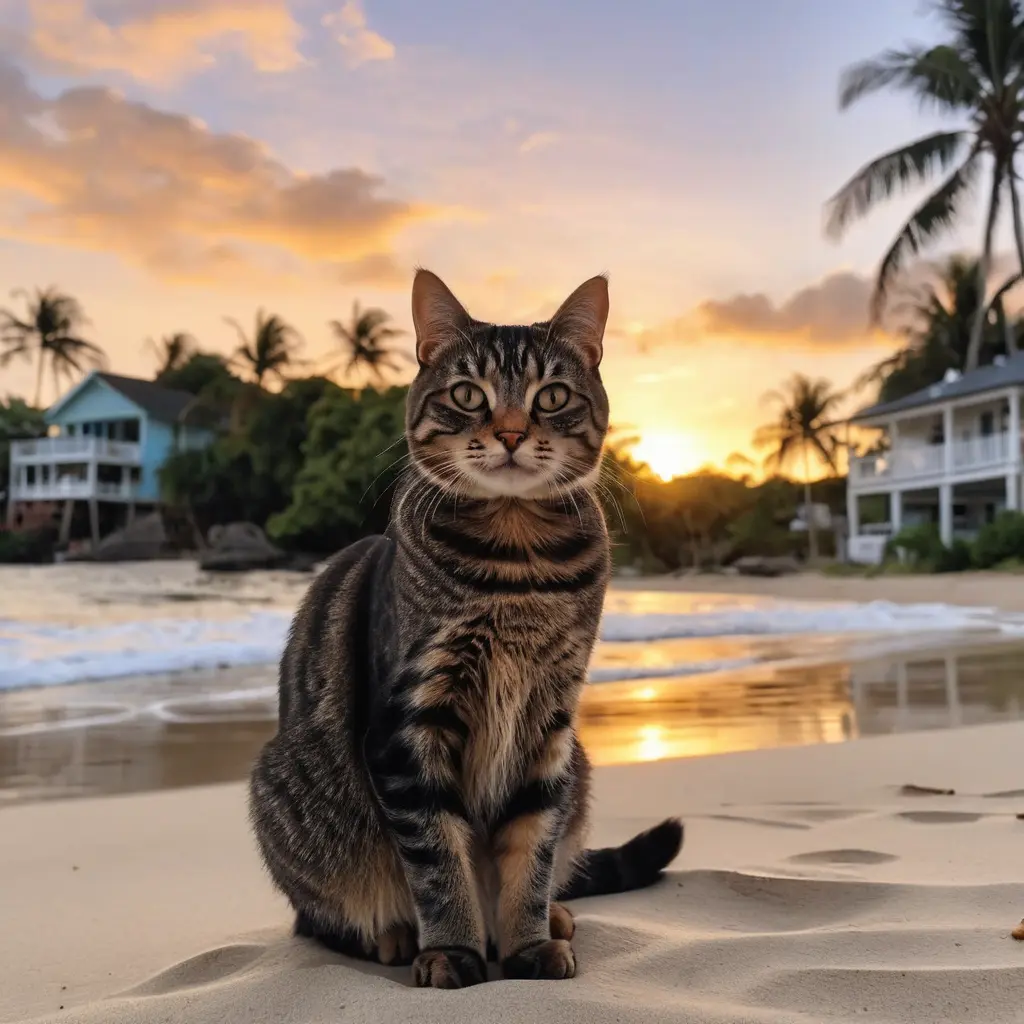
The Genetics Behind Tabby Coat Patterns
Beneath the mesmerizing swirls and stripes of tabby cats lies a hidden code—a symphony of genes orchestrating one of nature’s most captivating designs. While their coats seem artistically crafted, every pattern is a result of precise genetic instructions refined over millennia.
Understanding tabby cat genetics unlocks their beauty, revealing how tiny molecular variations give rise to the dazzling diversity we see today.
The Blueprint of a Tabby
At the heart of the tabby’s allure is the agouti gene, which dictates whether a cat’s fur will display alternating bands of light and dark pigment (a pattern called ticking). This gene interacts with others to create the four primary tabby variants:
- Mackerel: Vertical, tiger-like stripes shaped by a dominant allele of the Taqpep gene.
- Classic: Bold, swirling bullseye patterns linked to a recessive Taqpep mutation.
- Spotted: Rosette-like clusters formed when modifier genes disrupt stripe formation.
- Ticked: A frosted appearance caused by dense ticking, often seen in breeds like the Abyssinian.
A Dance of Dominance and Mutation
The coat patterns of tabby cats are a genetic marvel, shaped by a delicate balance of dominance and chance. For example:
- The Taqpep gene acts like a molecular “switch,” determining whether stripes will run straight (mackerel) or curl into whorls (classic). A 2021 study revealed that even subtle mutations in this gene can transform a cat’s entire aesthetic.
- Spotted tabbies owe their look to a genetic hiccup: a disruption in the Taqpep pathway causes stripes to fragment into dots, a trait selectively bred in wildcat hybrids like the Bengal.
- Ticked tabbies bypass bold markings entirely, their coats a result of hyperactive agouti signaling that overwhelms stripe-forming genes.
Evolution’s Subtle Hand
Why do these patterns persist? Scientists theorize that the tabby’s genetic flexibility offered survival advantages. Mackerel stripes, for instance, may have evolved to mimic shadows in tall grass, while classic swirls could disrupt a predator’s depth perception.
Intriguingly, all domestic cats—even solid-colored ones—carry the Taqpep gene. Their tabby-like markings often emerge faintly in kittens or under stress, a ghostly reminder of their wild ancestry.
Beyond the Surface
Recent research hints at deeper connections. A 2023 study proposed that pigment cells (melanocytes) migrate in unique waves during embryonic development, “writing” a tabby’s pattern before birth.
This biological choreography, influenced by factors like maternal nutrition and environmental stress, means no two tabbies are ever truly identical.
In decoding their DNA, we don’t just unravel science—we glimpse the ancient interplay of survival, chance, and elegance that makes tabby cats a living masterpiece.
Personality Traits of Tabby Cats
Are tabby cats’ personalities as unique as their coats? While feline behavior varies widely among individuals, tabbies—often celebrated for their striking looks—have sparked curiosity about whether their charm extends beyond their fur.
Anecdotal accounts and emerging research suggest that these cats might indeed lean into distinct traits, shaped by both their genetic heritage and the adaptability that allowed their ancestors to thrive alongside humans.
The Social Butterflies of the Cat World
Tabby cats are frequently described as exceptionally social compared to other felines.
A 2020 study from the University of California observed that cats displaying classic tabby patterns were more likely to initiate interactions with humans, theorizing that their wild ancestors’ cooperative hunting behaviors (like those seen in African wildcats) may have laid the groundwork for sociability.
- Curiosity: Many tabby owners note their cats’ relentless inquisitiveness, often investigating new objects, guests, or changes in their environment.
- Playfulness: A 2022 survey by the International Cat Association (TICA) found that tabbies were 20% more likely to engage in interactive play (e.g., fetch or puzzle toys) than their non-tabby counterparts.
Vocal and Expressive
Tabby cats aren’t shy about making their opinions known. Veterinarians and behaviorists often highlight their vocal nature, with some suggesting that the same genetic pathways influencing coat patterns might also affect communication styles.
- Chatty companions: From trills to chirps, tabbies are known for elaborate vocalizations, particularly during mealtimes or play.
- Emotional intuition: Stories abound of tabbies offering comfort during stressful moments, hinting at a heightened sensitivity to human emotions.
The Myth of the “Typical” Tabby
While trends exist, tabby cat behavior might surprise you. A mackerel-striped tabby might be an aloof bookworm, while a ticked-coat companion could be a clingy lap-lover.
Environmental factors—like early socialization, upbringing, and household dynamics—play a significant role. As feline behaviorist Dr. Lena Nguyen notes, “Genetics loads the gun, but environment pulls the trigger.”
Why the Stereotypes Stick
The perception of tabbies as “larger-than-life” personalities might stem from their visibility. As the most common coat pattern globally, their antics are simply observed—and shared—more often. Social media is awash with viral tabby stars, reinforcing their reputation as charismatic, scene-stealing companions.
In the end, tabby cats remind us that personality is as individual as their coat patterns. Yet, their blend of curiosity, sociability, and expressiveness offers a tantalizing glimpse into the interplay between genetics, history, and the unique bond they’ve forged with humans.
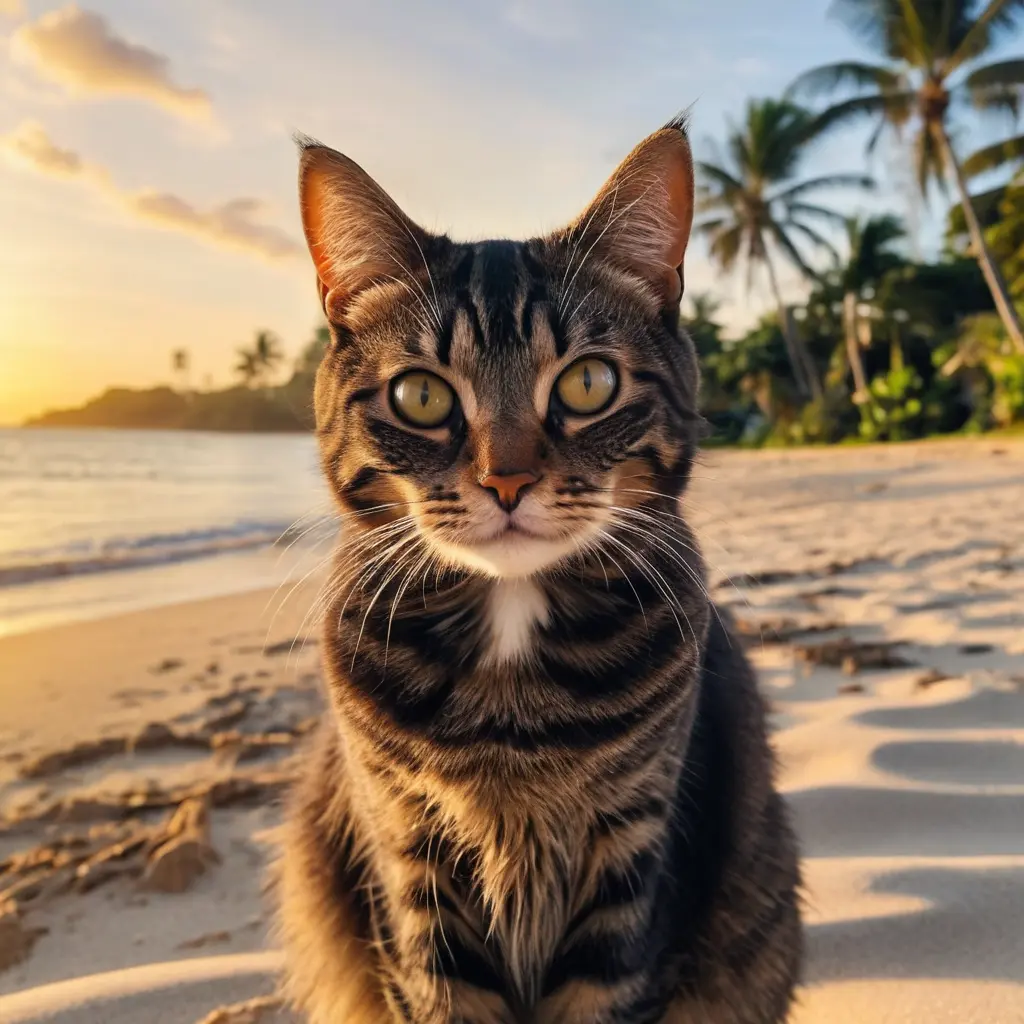
Health and Care Tips for Tabby Cats
Tabby cats, with their kaleidoscope of coats, are often as robust as they are beautiful. While their genetic diversity—rooted in their status as a pattern type rather than a breed—grants them resilience, tailored care ensures they thrive.
Health care for tabby cats includes understanding their unique needs, from grooming routines to preventive measures that honor their ancestral vigor.
Common Health Considerations
While tabbies aren’t predisposed to pattern-specific illnesses, their genetic tapestry can influence care:
- Hybrid Vigor: As natural-born survivors, mixed-heritage tabbies often enjoy “hybrid vigor,” reducing risks of breed-specific diseases.
- Coat-Linked Traits: Recent studies hint at subtle correlations—like orange tabbies (often males due to sex-linked genetics) having a slightly higher risk of obesity. Monitor portion sizes to keep them agile.
- Skin Sensitivity: Cats with dense ticking or spotted patterns may develop dry skin in colder climates. A humidifier or omega-3 supplements can help maintain their coat’s luster.
Grooming: Beyond the Surface
A tabby’s grooming needs vary with its pattern:
- Mackerel/Classic Stripes: Short, dense fur benefits from weekly brushing with a rubber curry brush to remove loose hair and distribute skin oils.
- Spotted/Ticked Coats: Prone to matting around the legs and underbelly. Use a fine-toothed comb to prevent tangles, especially during shedding seasons.
- Ears and Eyes: Light-colored tabbies (e.g., silver classics) may need gentle wiping around the eyes to prevent tear stains.
Diet and Exercise: Fueling Their Spirit
Tabby cats thrive with the right attention to nutrition and activity:
- Protein-Rich Diets: Mimic their wild ancestors’ meals with high-quality protein sources. Avoid fillers that can lead to weight gain.
- Puzzle Feeders: Channel their curiosity into mealtime enrichment. A 2023 study showed that tabbies engage more with food-dispensing toys than static bowls.
- Vertical Spaces: Install cat trees or shelves to satisfy their instinct to climb—a nod to their wildcat roots.
Preventive Care Essentials
- Annual Checkups: Even healthy tabbies need routine bloodwork and dental exams. Periodontal disease affects 70% of cats by age 3, so prioritize toothbrushing or dental treats.
- Parasite Control: Their adventurous nature increases exposure to fleas or ticks. Opt for vet-recommended topical treatments or oral preventatives.
Debunking Myths
- “Tabbies are hypoallergenic”: No cat is truly allergen-free. Their dander, not fur, triggers reactions. Frequent bathing (with vet-approved shampoo) can reduce allergens.
- “Striped cats age faster”: Pattern has no bearing on longevity. A 15-year lifespan is common with proper care.
By blending ancestral wisdom with modern care, your tabby cat can live a vibrant, whisker-twitching life—proof that even the most storied felines need nothing more than thoughtful attention to flourish.
Tabby Cats in Popular Culture
Tabby cats shine in popular culture, their striking coats and charismatic presence making them unforgettable icons across screens, pages, and social feeds. From Hollywood’s golden age to viral TikTok stars, these felines have clawed their way into the spotlight—often stealing scenes (and hearts) with their effortless charm.
Silver Screen Legends
- Orangey: The mischievous orange tabby from Breakfast at Tiffany’s (1961) famously upstaged Audrey Hepburn, earning two PATSY Awards (the animal equivalent of an Oscar). Trainer Frank Inn called him “the world’s meanest cat,” but his on-screen antics—like swatting Holly Golightly’s pearls—remain legendary.
- Jonesy: The resourceful tabby from Alien (1979) became a fan favorite, surviving the horror franchise’s chaos with nine lives to spare. His mackerel-striped coat made him a beacon of hope in the sci-fi thriller.
- Grumpy Cat: While primarily a social media star, Tardar Sauce’s perpetually grumpy face (caused by a genetic mutation) landed her a 2014 Lifetime movie, Grumpy Cat’s Worst Christmas Ever, cementing her as a cultural phenomenon.
Literary Icons
- Garfield: The lasagna-loving, Monday-hating tabby needs no introduction. Jim Davis’s comic strip, syndicated since 1978, capitalized on the relatability of his orange-striped protagonist—a sardonic everycat whose quirks mirror our own.
- Cheshire Cat: Lewis Carroll’s enigmatic feline from Alice’s Adventures in Wonderland is often depicted with a tabby-like striped grin. His cryptic wisdom (“We’re all mad here”) and ability to vanish—leaving only his smile—make him a timeless symbol of mystery.
- Mrs. Norris: Hogwarts’ infamous tattletale in the Harry Potter series, this scrawny tabby belongs to Argus Filch. Her mousy-brown stripes and beady eyes perfectly embody her role as a sneaky enforcer.
Social Media Royalty
- Colonel Meow: This Himalayan-Persian mix with a ticked coat and epic floof held the Guinness World Record for “longest fur on a cat” (9 inches). His deadpan expressions and diva persona amassed over 2 million followers.
- Nala Cat: A rescued tabby with a spotted coat, Nala boasts 4 million Instagram followers. Her playful videos, often featuring tiny hats and gourmet treats, redefine #CatGoals.
- Lil Bub: The permanently kitten-faced tabby (due to a genetic condition) became a viral sensation, starring in a documentary and raising funds for animal welfare.
Trivia to Ponder
- Tabby cats you didn’t know about: The Egyptian Mau—a breed with ancient roots—inspired the spotted tabby aesthetic seen in The Lion King’s Simba.
- Why tabbies dominate media: Their high-contrast patterns register vividly on camera, while their expressive faces (think Garfield’s squinty eyes) convey human-like emotions effortlessly.
From celluloid legends to meme royalty, tabby cats remind us that their appeal isn’t just skin (or fur) deep. They’re cultural chameleons—adapting across eras and mediums, yet always staying undeniably, irresistibly cat.
Conclusion
Tabby cats are truly one-of-a-kind, weaving together threads of ancient genetics, cultural lore, and irresistible charm.
From their wild ancestors stalking the African savannah to their modern-day reign as internet icons, these felines have mastered the art of adaptation—both biologically and culturally.
Their coats, a genetic masterpiece painted by evolution, tell stories of survival, while their personalities—often as bold as their stripes—reflect a legacy of curiosity and companionship.
A Legacy in Every Whisker
- Genetic Wonders: The Taqpep gene’s dance of dominance and mutation gives rise to their signature stripes, swirls, and spots.
- Cultural Icons: From Egyptian temples to TikTok fame, tabbies have been revered, feared, and adored across millennia.
- Everyday Enigmas: Their playful quirks and soulful gazes remind us that even the most common patterns hide uncommon depth.
Join the Tabby Love
Whether you’re a lifelong tabby enthusiast or new to their mystique, there’s always more to discover. Share your tabby tales in the comments—what makes your striped companion unforgettable? Or, if you’re considering expanding your family, visit a shelter: tabby cats of all patterns await, ready to weave their magic into your life.
Discover more about tabby cats today—and let their timeless allure remind you that sometimes, the most extraordinary stories wear the most ordinary disguises. 🐾

